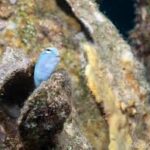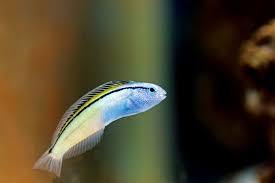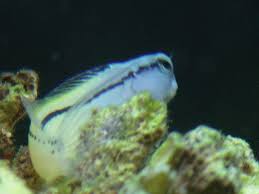
Bats, comprising over 1,400 species worldwide, play crucial roles in ecosystems as pollinators, seed dispersers, and insect controllers. Among the various plant species that interact with bats, Rosa cymosa, commonly known as the Cymosa rose or the Seven Sisters rose, stands out for its potential significance in supporting bat populations and ecosystem services. In this article, we delve into the fascinating relationship between Rosa cymosa and bats, exploring how these flying mammals interact with this plant species and the ecological implications of their mutualistic association.
#### The Role of Bats in Ecosystems
**Pollination**
Bats are vital pollinators for numerous plant species, including many flowering plants that bloom at night. With their nocturnal foraging habits and long tongues adapted for accessing nectar, bats play a crucial role in pollinating night-blooming flowers, such as those of Rosa cymosa. As bats visit flowers in search of nectar, they inadvertently transfer pollen from one flower to another, facilitating cross-pollination and the reproductive success of plant populations.
**Seed Dispersal**
In addition to pollination, bats contribute to seed dispersal by consuming fruits and dispersing seeds across landscapes. As frugivores, bats feed on the fruits of various plant species, including Rosa cymosa, and subsequently disperse seeds through their feces. This process helps plants colonize new habitats, maintain genetic diversity, and regenerate degraded ecosystems, highlighting the ecological importance of bats as seed dispersers.
#### Mutualistic Interactions with Rosa cymosa
**Feeding Ecology**
Rosa cymosa produces fleshy, nutrient-rich fruits, or hips, that are attractive food sources for bats. Bats belonging to frugivorous or nectarivorous species may visit Rosa cymosa plants to feed on ripe fruits or nectar from flowers, depending on the availability of resources and the species composition of the bat community. By consuming Rosa cymosa fruits, bats facilitate seed dispersal and contribute to the regeneration of Rosa cymosa populations in forested habitats.
**Foraging Behavior**
Bats exhibit diverse foraging behaviors that influence their interactions with Rosa cymosa and other plant species. Some bat species, such as nectar-feeding bats, may hover in front of Rosa cymosa flowers to access nectar using their specialized tongues, while others may glean insects attracted to the flowers or foliage. Additionally, bats may use echolocation to navigate through dense vegetation and locate Rosa cymosa plants or identify ripe fruits based on olfactory cues.
#### Ecological Implications
**Plant Reproductive Success**
The mutualistic relationship between bats and Rosa cymosa contributes to the reproductive success and genetic diversity of both partners. By serving as effective pollinators and seed dispersers, bats enhance the reproductive output of Rosa cymosa plants, leading to increased fruit production, seed dispersal distances, and genetic mixing within plant populations. This mutualistic interaction may promote the long-term persistence and resilience of Rosa cymosa populations in fragmented or disturbed habitats.
**Ecosystem Stability**
Bats play integral roles in maintaining ecosystem stability and functioning through their interactions with plant communities. By facilitating pollination and seed dispersal for plants such as Rosa cymosa, bats contribute to the maintenance of plant diversity, community structure, and ecosystem resilience. Furthermore, the services provided by bats, including pest control and nutrient cycling, have cascading effects on ecosystem dynamics and the provisioning of ecosystem services essential for human well-being.
#### Conservation Considerations
**Habitat Conservation**
Conserving habitat for both bats and Rosa cymosa is critical for maintaining their mutualistic relationship and supporting biodiversity conservation efforts. Protecting natural habitats, such as forests, woodlands, and riparian zones, provides essential foraging and roosting sites for bats, as well as suitable habitats for Rosa cymosa populations. Additionally, maintaining connectivity between habitat patches and restoring degraded habitats can enhance the resilience of bat populations and their associated plant communities.
**Public Awareness**
Raising public awareness about the ecological importance of bats and their interactions with plant species like Rosa cymosa is essential for promoting bat conservation and habitat stewardship. Educating communities about the benefits of bats as pollinators, seed dispersers, and insect controllers can foster positive attitudes towards bat conservation and encourage habitat-friendly practices, such as installing bat boxes, preserving natural roosting sites, and reducing light pollution.
#### Conclusion
The interaction between Rosa cymosa and bats exemplifies the intricate web of ecological relationships that shape ecosystems and support biodiversity. As key pollinators and seed dispersers, bats play indispensable roles in the reproductive success and persistence of Rosa cymosa populations, while Rosa cymosa provides essential resources for bats, such as food and shelter. By understanding and conserving these mutualistic interactions, we can promote the resilience of ecosystems and enhance the conservation of both bats and plant species like Rosa cymosa for future generations.
### Understanding the Interaction between Rosa cymosa and Bats (Part 2)
In the previous section, we explored the fascinating relationship between Rosa cymosa and bats, highlighting the essential roles that bats play in pollination, seed dispersal, and ecosystem stability. Now, let’s delve deeper into the ecological implications of the interaction between Rosa cymosa and bats, as well as conservation considerations and future research directions.
#### Ecological Implications
**Species Diversity**
The interaction between Rosa cymosa and bats contributes to the maintenance of species diversity and community dynamics in ecosystems. By facilitating pollination and seed dispersal for Rosa cymosa and other plant species, bats promote genetic mixing, population dynamics, and plant recruitment, leading to increased species richness and diversity within plant communities. This cascading effect extends to other organisms dependent on these plant resources, including herbivores, birds, and mammals, thereby enhancing overall biodiversity and ecosystem resilience.
**Habitat Connectivity**
The mutualistic relationship between bats and Rosa cymosa underscores the importance of habitat connectivity and landscape-scale conservation efforts. Maintaining corridors and connectivity between natural habitats allows bats to move freely between foraging areas, roosting sites, and reproductive habitats, ensuring the persistence of bat populations and their associated plant communities. Habitat fragmentation and loss can disrupt these essential ecological processes, leading to declines in bat populations and plant diversity.
#### Conservation Considerations
**Habitat Management**
Effective habitat management practices are essential for conserving the mutualistic relationship between Rosa cymosa and bats. Protecting and restoring natural habitats that support diverse plant communities and bat populations, including riparian zones, woodlands, and forested landscapes, is critical for maintaining ecosystem integrity and biodiversity. Implementing habitat management strategies such as controlled burning, invasive species control, and sustainable forestry practices can enhance habitat quality and resilience for both bats and Rosa cymosa.
**Urban Planning**
In urban and peri-urban areas, incorporating green infrastructure and bat-friendly design principles into urban planning can mitigate the negative impacts of urbanization on bats and their habitats. Creating green corridors, green roofs, and bat-friendly gardens within urban landscapes provides valuable foraging and roosting opportunities for bats, while also enhancing urban biodiversity and ecosystem services. Additionally, reducing light pollution, minimizing pesticide use, and preserving natural waterways can benefit both bats and Rosa cymosa in urban environments.
#### Future Research Directions
**Community Ecology**
Further research is needed to elucidate the complex ecological interactions between bats, Rosa cymosa, and other plant and animal species within their respective communities. Investigating the structure and dynamics of bat-plant networks, as well as the functional roles of different bat species in pollination and seed dispersal processes, can enhance our understanding of community ecology and ecosystem functioning. Integrating field studies, molecular techniques, and modeling approaches can provide insights into the resilience of mutualistic interactions to environmental change and anthropogenic disturbances.
**Climate Change Impacts**
Climate change poses significant challenges to the mutualistic relationship between Rosa cymosa and bats, with potential implications for plant-pollinator dynamics, phenological synchrony, and species distributions. Research on the effects of climate change on bat activity patterns, plant flowering phenology, and fruit availability can inform conservation strategies and adaptive management approaches. Monitoring long-term trends in bat populations, plant reproductive success, and ecosystem health can help identify climate change impacts and guide conservation interventions.
#### Conclusion
The interaction between Rosa cymosa and bats exemplifies the intricate web of ecological relationships that underpin ecosystem functioning and biodiversity conservation. By understanding and conserving these mutualistic interactions, we can promote the resilience of ecosystems and enhance the conservation of both bats and plant species like Rosa cymosa. Through interdisciplinary research, habitat management, and community engagement, we can ensure the long-term viability of bat-plant mutualisms and safeguard the ecological services they provide for future generations.










